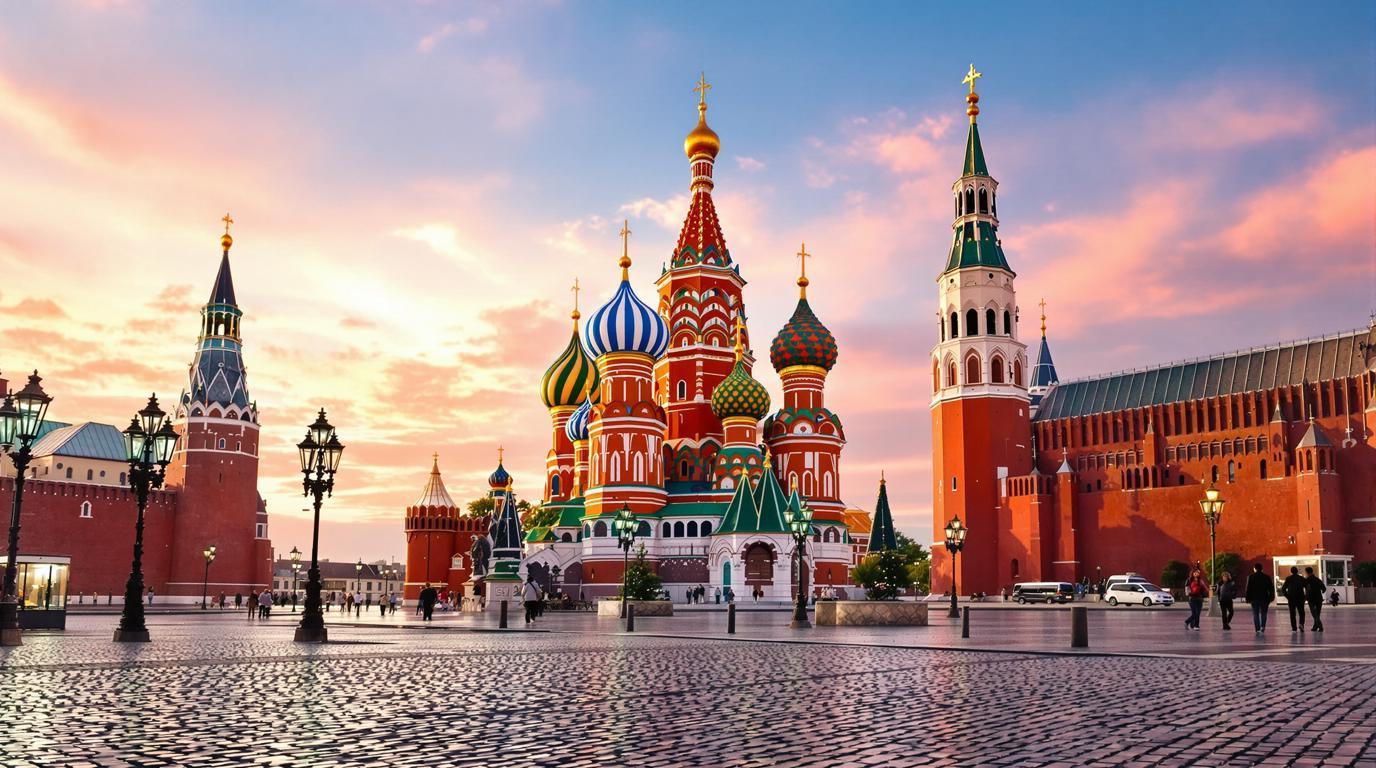Red Square isn’t just Moscow’s most famous landmark – it’s the pulsing heart of Russian history where revolutions were born and empires collapsed. This UNESCO World Heritage site spans 70,000 square meters of cobblestones that have witnessed coronations, executions, and military parades across centuries of tumultuous history.
The cathedral that nearly cost an architect his eyes
St. Basil’s Cathedral stands as Red Square’s most recognizable icon with its candy-colored onion domes spiraling toward the sky. Legend claims Ivan the Terrible was so impressed with the completed cathedral in 1561 that he had the architect blinded to prevent him from creating anything more beautiful. Whether myth or reality, the cathedral’s asymmetrical design and vibrant colors create a fantastical silhouette unlike anything else in Orthodox architecture.
A fortress hiding presidential secrets
The imposing Kremlin walls frame Red Square’s western edge, concealing far more than government offices. Behind those crenellated red-brick defenses sits the official residence of Russia’s president. Like America’s White House, the Kremlin hides underground bunkers and priceless art collections behind its historic façade – though with considerably more medieval intrigue.
The shopping mall older than your great-grandmother
GUM Department Store’s elegant glass-roofed arcades have served Moscow’s elite since 1893. During Soviet times, ordinary citizens would queue for hours hoping to purchase scarce goods, while party officials shopped in restricted sections. Today, luxury boutiques fill its three levels, but the building’s neo-Russian architecture and spectacular skylights remain the real attraction.
The mummy drawing tourists for 100 years
Lenin’s Mausoleum holds the preserved body of Vladimir Lenin in a climate-controlled crystal sarcophagus. Since 1924, millions have filed past the revolutionary leader’s remains in hushed reverence. The embalming process remains a closely guarded secret, requiring regular maintenance to preserve his lifelike appearance nearly a century after his death.
“Standing in Red Square at dawn, when the crowds haven’t yet arrived, you can feel the weight of history beneath your feet. These stones have witnessed the rise and fall of empires,” explains Mikhail Volkov, Moscow historian and tour guide.
The hidden medieval village within walking distance
Just 30 minutes from Red Square’s grand expanse lies Kitay-Gorod, a neighborhood of narrow, winding streets preserving fragments of medieval Moscow. Like hidden European villages that travelers often overlook, this district offers ancient churches, merchant houses, and secret courtyards far from the tourist crowds.
A square that isn’t red at all
Despite its name, Red Square has nothing to do with communism or Soviet politics. The Russian word “krasnaya” meant both “red” and “beautiful” in old Russian, and the square was called “beautiful” long before the Bolshevik Revolution. The name simply celebrated the square’s architectural splendor rather than political ideology.
The botanical oasis few tourists discover
Alexander Garden runs along the Kremlin wall, offering a tranquil escape from Red Square’s monumental grandeur. Similar to hidden botanical havens in Europe, the garden features over 50 species of trees and shrubs, creating an unexpected green sanctuary amid Moscow’s urban landscape.
“Tourists rush through Red Square checking landmarks off their list, but Russians come to stroll the gardens and reflect. This is where Moscow breathes,” says Anna Petrova, lifelong Moscow resident.
Underground palaces beneath your feet
Moscow’s metro stations near Red Square rival many museums in artistic splendor. Komsomolskaya station dazzles with yellow marble pillars and elaborate mosaics depicting Russian military victories. Ploshchad Revolyutsii features 76 bronze sculptures representing Soviet citizens, including a dog whose nose has been polished golden by passengers touching it for luck.
A knight’s templar connection
Few visitors realize that medieval Moscow had connections to Europe’s crusader knights. Like certain medieval French villages with Templar histories, the area around Red Square contains subtle architectural references to these mysterious warrior monks, visible in certain stone carvings and building layouts to those who know where to look.
Island paradise in a continental capital
During summer months, a section of Red Square transforms into an unexpected beach-like atmosphere with open-air cafés and cultural performances. While not quite a paradise island, this temporary transformation creates a surprising oasis of leisure in this historically solemn space.
Standing in Red Square today means placing your feet on stones that have witnessed Russia’s grandest triumphs and darkest tragedies. It remains a place where history isn’t confined to museums but lives in the very air you breathe – a monumental stage where Russia’s past, present and future continuously converge in spectacular fashion.
